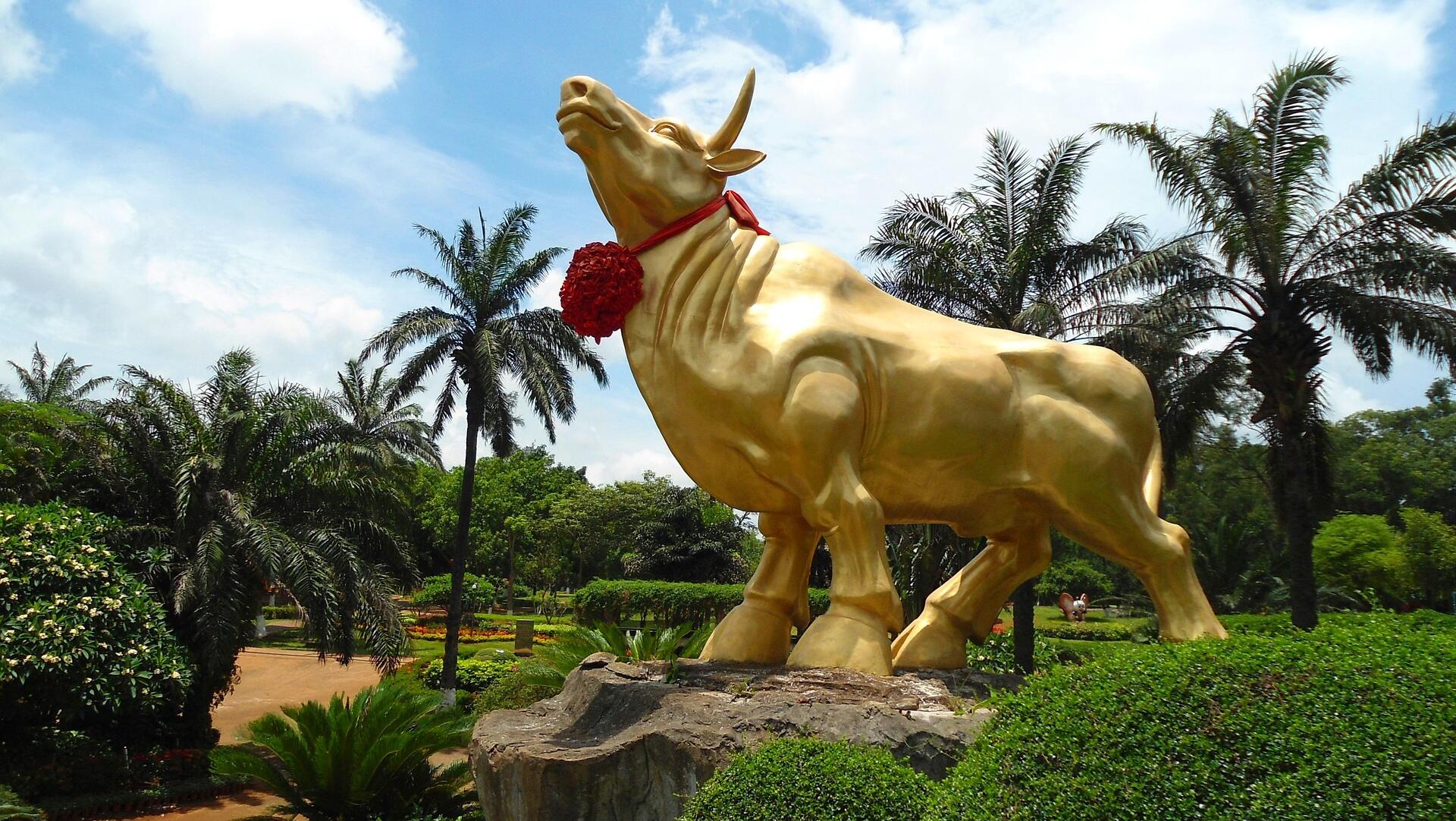With gold hitting a seventh record today at US$2932.05 an ounce, 2025 is expected to be ‘annus mirabilis’ for Australian gold funds.
Despite gold’s bull market rally in 2024, some brokers believe the precious yellow metals' run up is far from over. While Citi expects the price to hit US$3,000 later this year, JP Morgan has a year-end target of US$3,150.
Assuming investment demand rises 10% this year, Bank of America believes the gold price could even hit US$3,500.
Why gold could go higher
Gold prices are up 47% over the past year and 11.5% year-to-date.
What’s driving broker’s continued optimism about the gold price is A) the market’s growing appetite for safe-haven investing amid heightened market volatility, B) fear that the inflation genie in the U.S. may not be truly back in it bottle and C) economic uncertainty amid U.S. president Trump’s tariffs.
Also driving up the demand for gold - which according to the World Gold Council recently hit a new record high of 4,974t - is sustained central bank buying.
Historically, gold prices kick up along with inflation and U.S. inflation numbers shocked the market last month with consumer prices up 0.5% month-on-month compared to expectations of a 0.3% increase.
This marks the most significant increase in nearly 18 months.
How to play gold’s upside via ETFs
With all this in mind, Azzet has identified five ASX-listed gold ETFs and exchange-traded products (ETPs) offering exposure to physical gold (bullion).
While gold companies typically trade at a discount to movements in the gold price, we’ve also included two ASX-listed gold ETFs allowing you to play gold’s upside via actual gold companies (explorers/producers), which have been delivering some outstanding numbers earlier this week.
For example, yesterday Northern Star (ASX: NST) declared a record dividend payout on the back of higher gold prices and sales in 1H FY25 and reaffirmed FY25 production guidance of 1,650-1,800k ounces of gold.
A day earlier, Evolution Mining (ASX: EVN) announced a 22% increase in gold production to 388,346 ounces and a record earnings per share (EPS) of 18.4 cents.
Seven gold ETFs benefitting from gold’s ascent
Having been on a tear last year, the following seven ETFs have averaged 54% growth over the last year, and that growth has extended into 2025 with these ETFs having averaged 14% growth year to date.
1. Global X Physical Gold (ASX:GOLD)
Previously known as ETFS Physical Gold, Global X Physical Gold is an ETP offering a low-cost and secure way to access physical gold via the stock exchange," while avoiding the struggle of storage.
The entity is backed by gold held in a London vault by JPMorgan Chase (NYSE:JPM).
Investors can redeem shares for physical gold, not just the cash equivalent; yet this comes with a fee of AU$1,000 per redemption.
Management fee is 0.4%.
2. Perth Mint Gold (ASX:PMGOLD)
Perth Mint Gold is an ETP that tracks the international price of gold in Australian dollars.
Investments are backed by gold bullion stored in the Perth Mint.
Perth Mint Gold is the only gold product on the ASX that maintains a government guarantee for holdings.
Management fee 0.15%, making it the lowest-cost physical gold ETF on the ASX.
Market cap $14.4 billion; share price up 50% in one year.
3. BetaShares Gold Bullion ETF (ASX:QAU)
The BetaShares Gold Bullion ETF tracks the price of physical gold.
It is backed by gold bullion stored by JPMorgan Chase in London.
Market cap $825 million; share price is up 44% in one year.
This ETF has a management fee of 0.59%.
4. VanEck Gold Miners ETF (ASX:GDX)
The VanEck Gold Miners ETF provides investors with exposure to the largest global gold producers and royalty companies involved in the precious metals space.
Top holdings include Newmont (NYSE: NEM), Agnico Eagle Mines (NYSE: AEM) and Barrick Gold (NYSE: GOLD).
The ETF also offers exposure to Australian gold miners, with around 10% of holdings allocated to Australian gold operators, including Northern Star Resources (ASX: NST).
GDX provides a yearly dividend, currently set at 1.65%.
Management fee of 0.53%.
Market cap $673 million; share price up 67% in one year.
5. iShares Physical Gold ETF (ASX:GLDN)
iShares Physical Gold ETF offers investors exposure to the spot price of gold without the need for physical storage of personal gold holdings.
Since its inception, GLDN has provided investors with an 18% return.
Management fees are among the lowest at 0.18%.
Market cap $235 million; share price up 50% in one year.
6. Betashares Global Gold Miners ETF (ASX:MNRS)
The Betashares Global Gold Miners ETF lets Australian investors add a diverse range of global companies in the gold mining space to their portfolio by focusing on the biggest ex-Australia precious metals companies.
Its top holdings include Newmont, Barrick, Agnico Eagle and royalty company Wheaton Precious Metals (NYSE: WPM).
Management fee of 0.57%.
Market cap $90 million, share price up 67% in one year.
7. VanEck Gold Bullion ETF (ASX:NUGG)
The VanEck Gold Bullion ETF allows investors exposure to the gold market without the need to purchase physical gold.
It is backed by physical gold bullion bars sourced from Australian gold producers.
Management fee of 0.25% and since its inception has returned 21.36%.
Market cap: $103 million; share price up 50% in one year.
This article does not constitute financial product advice. You should consider independent advice before making financial decisions.



